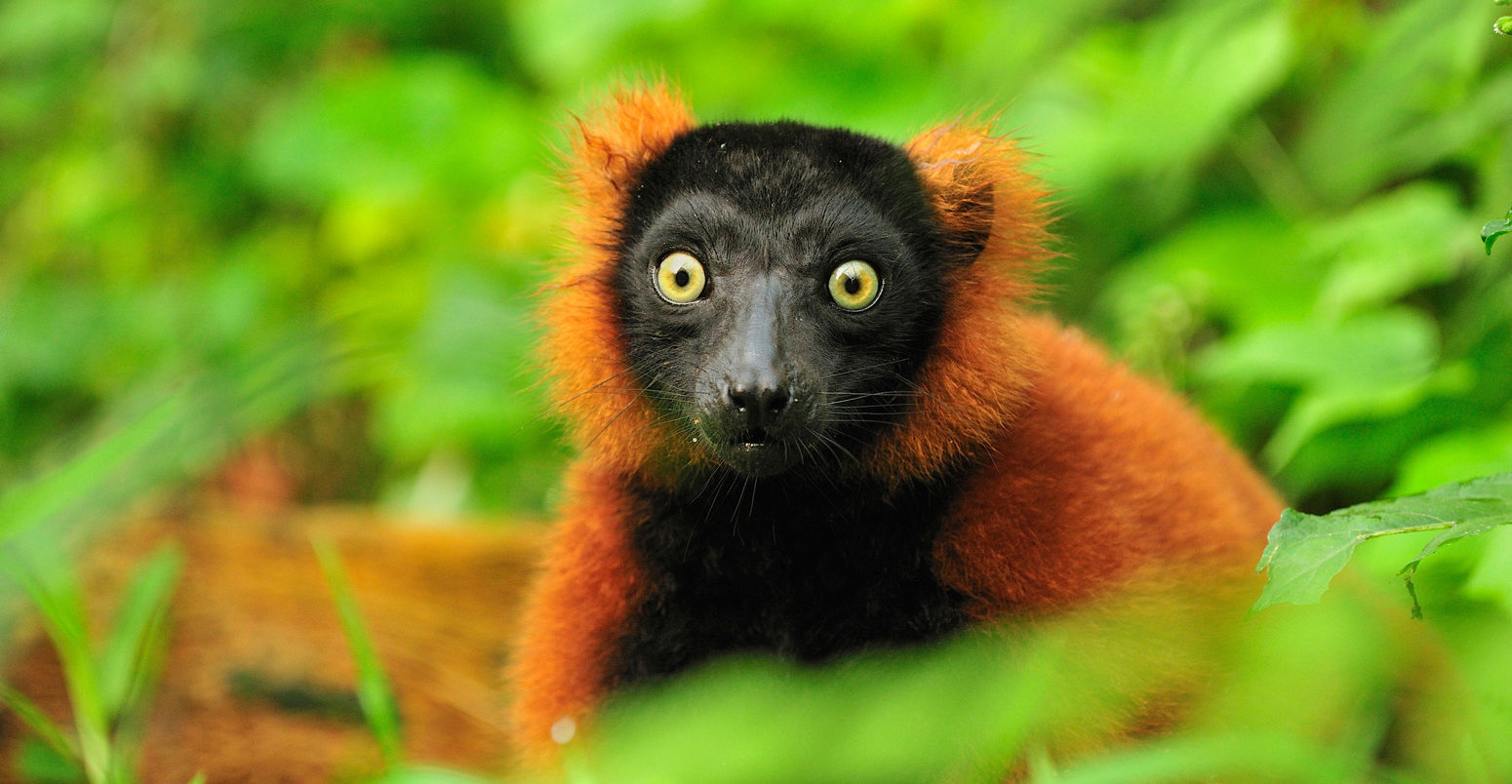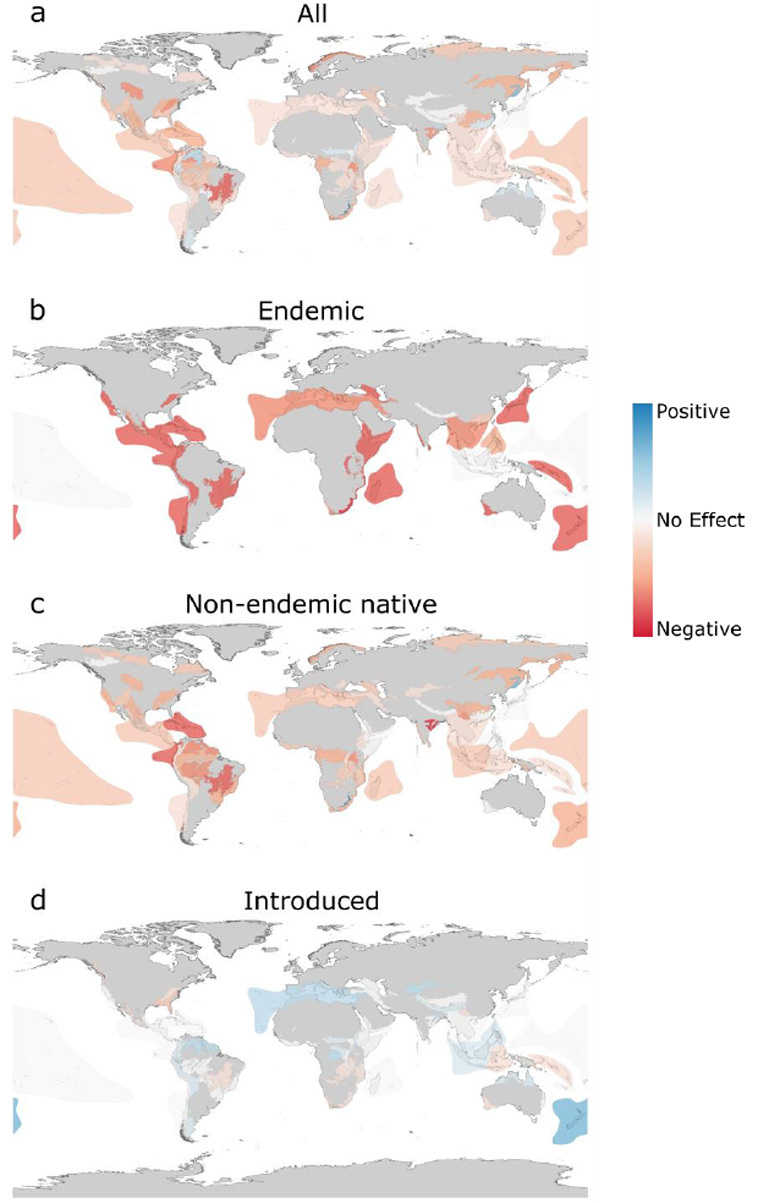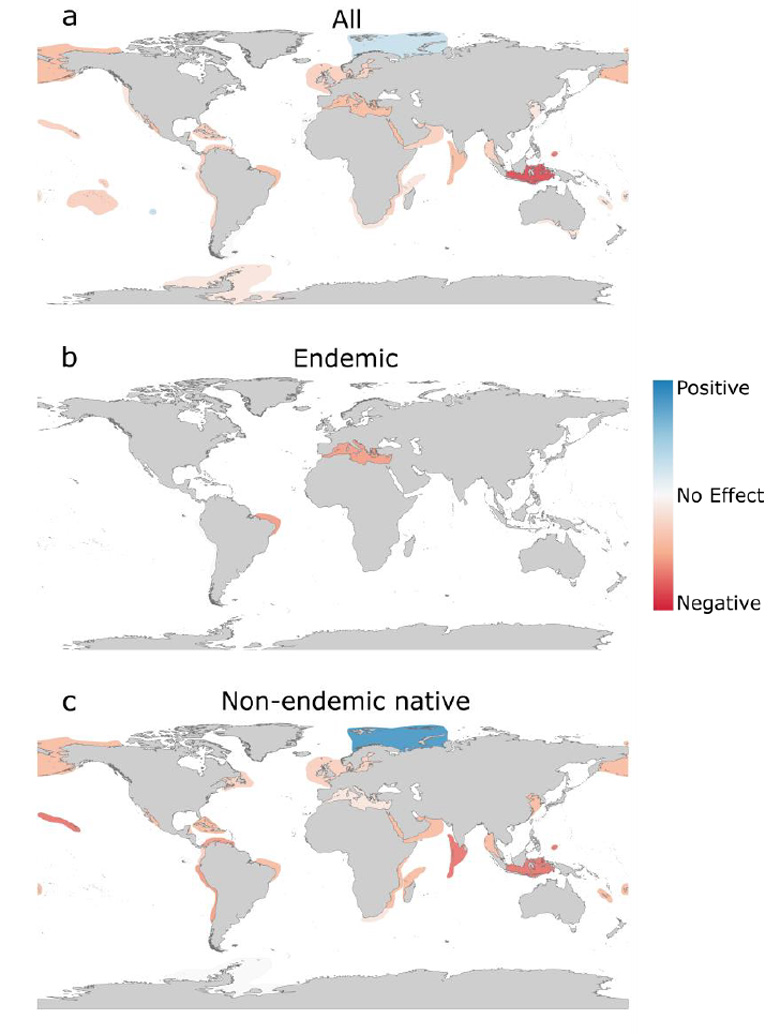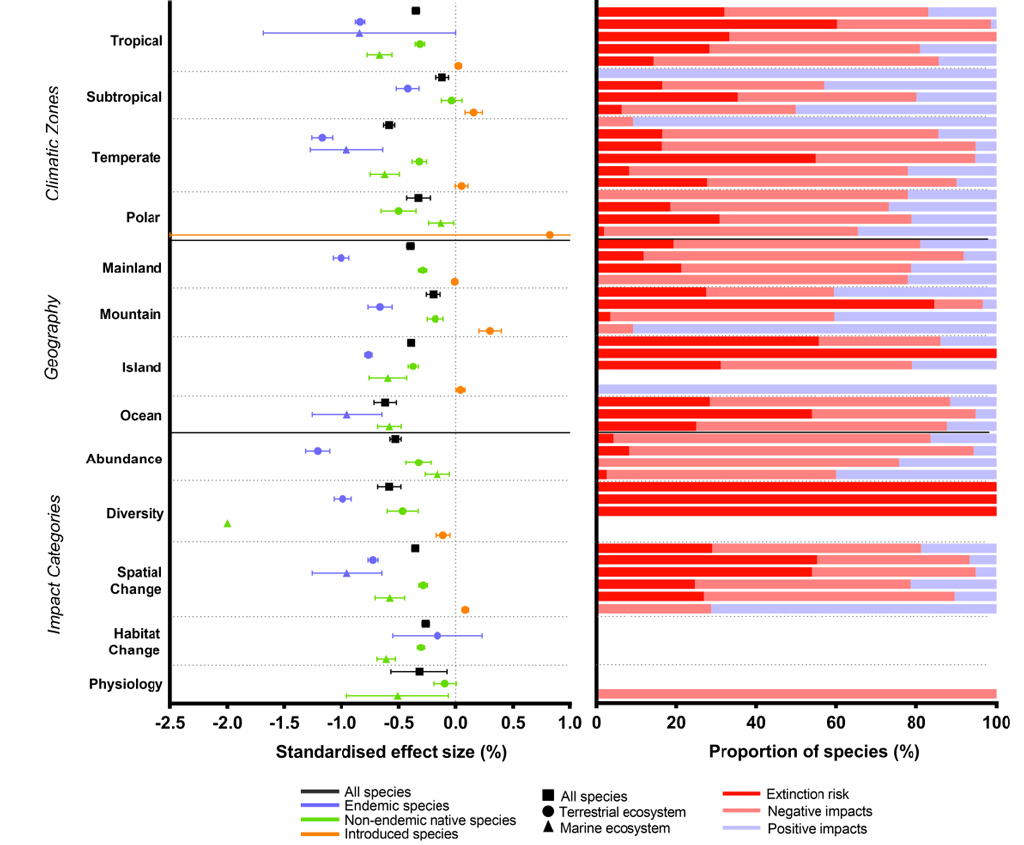
Climate change will hit ‘endemic’ plants and animals the hardest, study warns
Ayesha Tandon
04.09.21Ayesha Tandon
09.04.2021 | 5:00amPlants and animals that only live in one region – known as “endemic” species – are expected to be “consistently more adversely impacted” by climate change than their less specialised counterparts, new research shows.
The synthesis study, published in Biological Conservation, finds that more than 90% of endemic species will face negative consequences – such as reduced populations – if global warming reaches 3C above pre-industrial levels. However, it adds that invasive species are expected to see overall neutral or positive impacts from the warming climate.
This trend could allow “generalist and widespread opportunists” to replace endemic species, the study warns, leading to a drop in biodiversity.
The study also calculates extinction risks at different warming levels. It finds that 2% of endemic species are at risk of extinction if warming is limited to 1.5C, and 4% are at risk at 2C. However, the risk rises to 20% for land-based ecosystems, and to 32% in marine ecosystems if warming hits 3C.
“We were really surprised at how much more we expect to lose with such little increases in average temperature,” an author on the study tells Carbon Brief, adding that “following the Paris agreement [warming limits] would make a huge difference for our biodiversity worldwide”.
‘Flagship species’
Using more than 8,000 projections from scientific papers, the authors analyse the risk of climate change to species in 273 “irreplaceable” hotspots of “exceptional biodiversity”.
The authors group species into three categories – “endemic”, “non-endemic native” and “introduced” species – based on where they typically live.
An endemic species lives exclusively in one geographic region. Areas of high biodiversity are often “overflowing” with endemic “flagship species” explains Dr Stella Manes from the Federal University of Rio de Janeiro – the lead author of the study.
For example, all species of lemur are endemic to Madagascar, meaning that they are not found in any other location on the planet. Similarly the South Africa’s national bird – the blue crane – is endemic to the country, while the snow leopard is endemic to the Himalayas.
If a species is naturally found in more than one geographic region, it is called a native species when found in those regions. Meanwhile, if a species is not naturally found in a given region but is brought there through human activity – either intentionally or unintentionally – it is called an “introduced” species.
The maps below show the expected impact of climate change on species in land-based biodiversity hotspots – standardised across a range of dates and warming scenarios. Red shading indicates that climate change will have a negative impact on species in the area, and blue shading indicates a positive impact.

The authors find that land-based endemic species are projected to be 2.7 times “more impacted” by climate change than non-endemic native species, and 10 times more impacted than introduced species.
This confirms the findings of past research by showing that endemic species are the most significantly impacted by climate change, explains Dr Mark Urban – an associate professor in ecology and evolutionary biology at the University of Connecticut, who was not involved in the study. He tells Carbon Brief:
“It makes sense that endemic species would be more threatened by climate change. Endemic species are already the little guys. They usually occupy smaller ranges and live in smaller populations, and these factors make species more susceptible to any threat, not just climate change.”
Introduced species, on the other hand, can expect a “neutral or positive” impact from climate change, the study finds. Introduced species are often able to adapt to new environments, but sometimes have a negative impact on the local ecosystem – for example outcompeting native species for food. In this case, they are known as “invasive”.
Plants are “some of the world’s most proficient invasive species”, the study says, because they can often “outcompete” native species under increased temperatures and CO2 levels. In this study, plants made up the majority of introduced species in biodiversity hotspots.
Dr Mariana Vale – a researcher from the Federal University of Rio de Janeiro and author on the study – tells Carbon Brief that “globalisation is the big problem” when it comes to invasive species.
“It is not surprising that so many invasive species are plants,” she says. This is because plants can easily be carried into a new ecosystem – for example via luggage contaminated with seeds – and then they are able undergo clonal reproduction, she explains.
Manes adds that invasive plant species can go “basically everywhere”, adding that humans are even introducing non-native plant species to Antarctica through the mud on their boots. Furthermore, plants can be carried by the wind, making it easier for them to move from island to island, she notes.
Losing biodiversity
The authors also perform this analysis for marine ecosystems, as shown in the map below.

The findings suggest that the proportion of marine species at risk of extinction is more than twice as high for endemic species as it is for natives.
The study shows that in the Mediterranean – “an enclosed sea with high endemicity” – climate change is expected to bring a “high risk of extinction” to one quarter of species. The authors label a species as a high risk of extinction if they see a drop in abundance of over 80% – the same criteria as used by the International Union for Conservation of Nature (IUCN).
In the Arctic, the authors found that warming temperatures are expected to have a positive impact on some marine species, allowing them to increase their abundance or range.
The authors note that, of the 232 studies explored in this paper, only 34 focus on marine ecosystems, and no data was found for almost half of the 273 areas of exceptional biodiversity originally defined.
Dr Maria Paniw – a research fellow at the Estación Biológica de Doñana – tells Carbon Brief that she is nevertheless “thrilled” to see aquatic systems included in this study, as they are often left out due to a lack of data:
“[Aquatic systems] are less often considered, particularly in synthesis pieces where terrestrial systems are included, and especially when we talk about climate change. A case-in-point, is our own review, where we only looked at terrestrial mammals – due to a lack of data for marine species.”
Overall, these trends could lead to a loss of biodiversity, the study finds, as endemic species face a greater threat from climate change than non-endemic and introduced species. While it is important to protect endangered species, Vale tells Carbon Brief that biodiversity has “many co-benefits that go beyond saving the species themselves”.
For example, Manes tells Carbon Brief that diversity is “closely linked to ecosystem stability”:
“When you have more species, you increase the change that these species can perform the same functions and maintain the same ecosystem services – contributions that nature gives to people. The more diverse an ecosystem, the more stable it is, because if you lose one species, another can provide these benefits.”
Paniw adds that biodiversity is also important to people:
“If we take a human-centric view, biodiversity is important because ultimately our health and welfare depend on it. Healthy, diverse ecosystems have been linked to improved ecosystem functions, such as clean air, clean water and food.”
Extinction risk
The study also calculates the extinction risk to species in different climatic, geographic and biological impact categories. The plot below shows how species in different regions are expected to be impacted by climate change.
For each category, results are presented for all species (black), endemics (purple) non-endemics (green) and introduced species (orange) on the left hand side. The bar indicates the spread of results from that category, with results to the left of zero indicating a negative impact and to the right of zero indicating a positive impact.
On the right side of the plot, the bars indicate the proportion of species that will be positively impacted by climate change (purple), negatively impacted (pink) or will face an extinction risk (red).

The study finds that if the planet heats up by more than 3C, a third of endemic species on land and half of marine endemic species will be at risk of extinction.
The findings suggest that island and mountain-dwelling species are more than six times more vulnerable to the impacts of climate change than those from mainland regions. Under a 3C warming scenario, the study finds that 84% of endemic species from mountain regions and 100% from islands face a “high extinction risk”.
Urban explains that this vulnerability is because mountain and island species are often unable to move to a more suitable climate:
“This research provides more evidence that some of the species most threatened by climate change are those that live the island lifestyle – either on traditional oceanic islands or the ‘sky islands’ that exist wherever cold mountaintops stand isolated in a sea of hot lowlands. These island species often cannot track their climate as it shifts out from under them because their next suitable habitat is surrounded by wide expanses of water or heat.”
Dr Vale adds that to compensate for the increase in temperature, species often climb to higher altitude. However, due to the triangular shape of mountains, the higher a species climbs, the less area they have available.
Meanwhile, with its large number of islands, half of the endemic species in Oceania will be at risk of extinction due to climate change, the paper says.
The authors also found that species living in the tropics face a high level of risk, with more than 60% of tropical terrestrial endemic species projected to be threatened by extinction from climate change.
Urban tells Carbon Brief that it is important to study areas of high biodiversity because preserving species in these areas “might give us the most bang for the buck”.
However, he notes that it will also be important to consider conservation in “species-poor” regions:
“I think we cannot just focus on the richest places on Earth if we are also concerned with ecosystem function. In species-poor places, the loss of just one species can dramatically change the ecosystem because no replacements exist. I think we need to consider threats to species across all of the Earth, but for different reasons. That means we need ways to make difficult decisions on how to allocate limited conservation funds to save both the most species and the most important species on Earth.”
Manes et al (2021) Endemism increases species’ climate change risk in areas of global biodiversity importance, Biological Conservation, doi.org/10.1016/j.biocon.2021.109070.
-
Climate change will hit ‘endemic’ plants and animals the hardest, study warns

